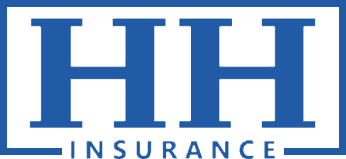If you are expecting a little one, it should come as no surprise that you will need to make some adjustments in and around your home to make it as safe as possible before your new addition arrives. Babies and toddlers are a bit like puppies – they are curious and into everything, especially once they become mobile and more independent. They will surely put things in their mouths and will explore and touch every single thing that they can get their little hands on. As a new parent, it is your job to minimize the risks around your home so that your baby can play and explore without getting hurt, and without ruining the house. The Tampa homeowners insurance experts at HH Insurance want to help make sure your house is childproof and that every area gets covered – so we have put together ten steps for you to follow to achieve maximum safety in your home:
- Get low. A great way to begin the process of baby-proofing each room is by getting low on the floor to experience the room from what will be your baby’s vantage point. It will help you to find not just the obvious hazards, but others you may have overlooked.
- Lock cabinets and drawers. Purchase and install safety locks to secure any drawers or cabinets within your baby’s reach. This is especially important when storing harmful toxic products and cleaning solutions.
- Cover and secure all electronics and outlets. Keep your electronics as safe as possible by putting cords out of reach and covering up anything that isn’t in use. Also, purchase safety covers for outlets. These are available for both outlets that are in use to keep the baby from pulling out the cords, and those that aren’t.
- Remove toxic plants. If you have houseplants, do some research to find out if any of them are toxic when ingested. Keep those plants up high, and rearrange the rest so your baby won’t be tempted to pull them down.
- Secure any heavy items. Look around for light or top-heavy furniture around your home that a baby could easily topple, and secure those pieces to the wall if possible.
- Shut off access to stairs and balconies. Stairwells can be especially dangerous for toddlers who are just starting to cruise around. Use sturdy gates at both the top and bottom of the stairs to keep the baby away. If you have guardrails that a baby’s head could get stuck in, you can also purchase a safety net to cover them up that prevent children from sticking their head through.
- Invest in baby gates. An easy and cost-effective way to keep a baby from getting into trouble is just to keep them out of a particular area. Have several baby gates on hand to keep your child close and visible, no matter where you are in the house.
- Supervision is key. Don’t assume that just because you’ve done the preliminary work you can let your baby roam free. Always keep a close eye on your baby!
- Learn first aid. Taking an infant and child first aid course is an additional way to give you invaluable skills and peace of mind when you bring your new family member home.
- Don’t forget outdoor spaces. When baby-proofing your home, don’t forget the deck, backyard, shed, garage, pool or hot tub, and other areas outside the main house. These places can be especially dangerous and should be both child-proofed and secured from easy access wherever possible.
HH Insurance Tampa Homeowners Insurance
Follow these 10 steps to childproof your home, and invest in Tampa homeowners insurance to ensure peace of mind when it comes to protecting your family. You and your home deserve a policy tailored to your specific needs, one that gives you a sense of security and protection at a fair, competitive price. At HH Insurance, that’s what our agents deliver. Contact us for a Tampa homeowners insurance quote today!
**This blog provides a brief overview of the terms and phrases used within the insurance industry. These definitions are not applicable in all states or for all insurance and financial products. This is not an insurance contract. Other terms, conditions and exclusions apply. Please read your official policy for full details about coverage. These definitions do not alter or modify the terms of any insurance contract.
